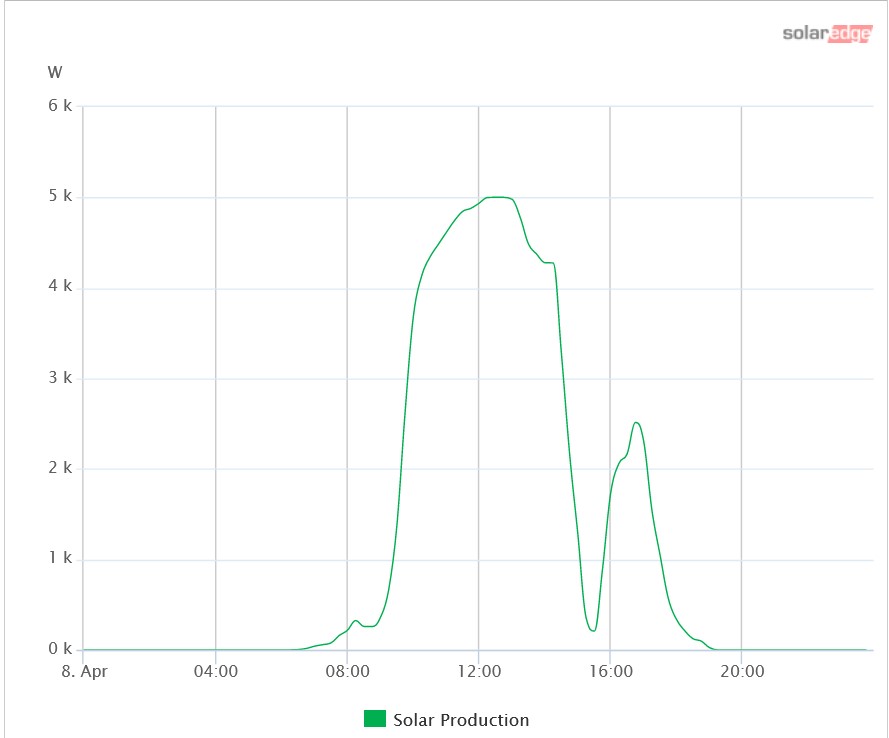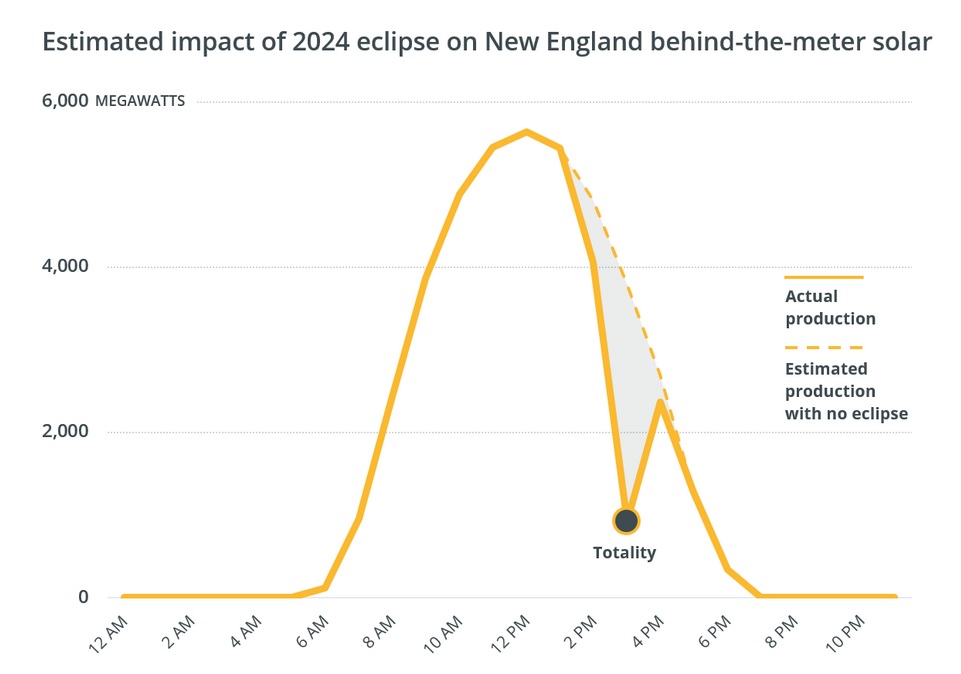From ISO-New England: As expected, the April 8 solar eclipse led to a steep and significant decrease in solar energy production, but due to extensive planning by ISO New England operators, the event caused no disruptions to the power system.
Portions of Vermont, New Hampshire, and Maine were in the eclipse’s path of totality, while the rest of New England saw at least 80% of the sun blocked during the event’s peak. These conditions led regional solar production to drop by an estimated 4,000 megawatts (MW) over the course of two hours.
“Our preparations paid dividends,” said Steven Gould, the ISO’s director of Operations. “The work done ahead of time to understand how the eclipse would impact the regional power system was crucial to a smooth operating day.”
ISO New England system operators accounted for the sudden drop-off of solar resources by dispatching other generators, namely natural gas and hydroelectric resources. The ISO’s market software determined which resources to dispatch, based on the results of the region’s Day-Ahead and Real-Time energy markets.
Small-scale, distributed photovoltaic panels connected directly to distribution systems accounted for most of the reductions—an estimated 3,300 to 3,500 MW. These systems, which are not connected to the regional power system operated by the ISO, make up the vast majority of solar resources in New England and, when the sun is shining, reduce the amount of energy demand on the grid.
Grid-connected solar systems dropped production by about 650 MW during the eclipse’s peak.
As the eclipse concluded in the late afternoon, approximately 1,350 MW of combined behind-the-meter and grid-connected solar production returned to the system.
My production looked very similar to New England’s (on a smaller scale of course):



 Return to the Concord Monitor
Return to the Concord Monitor